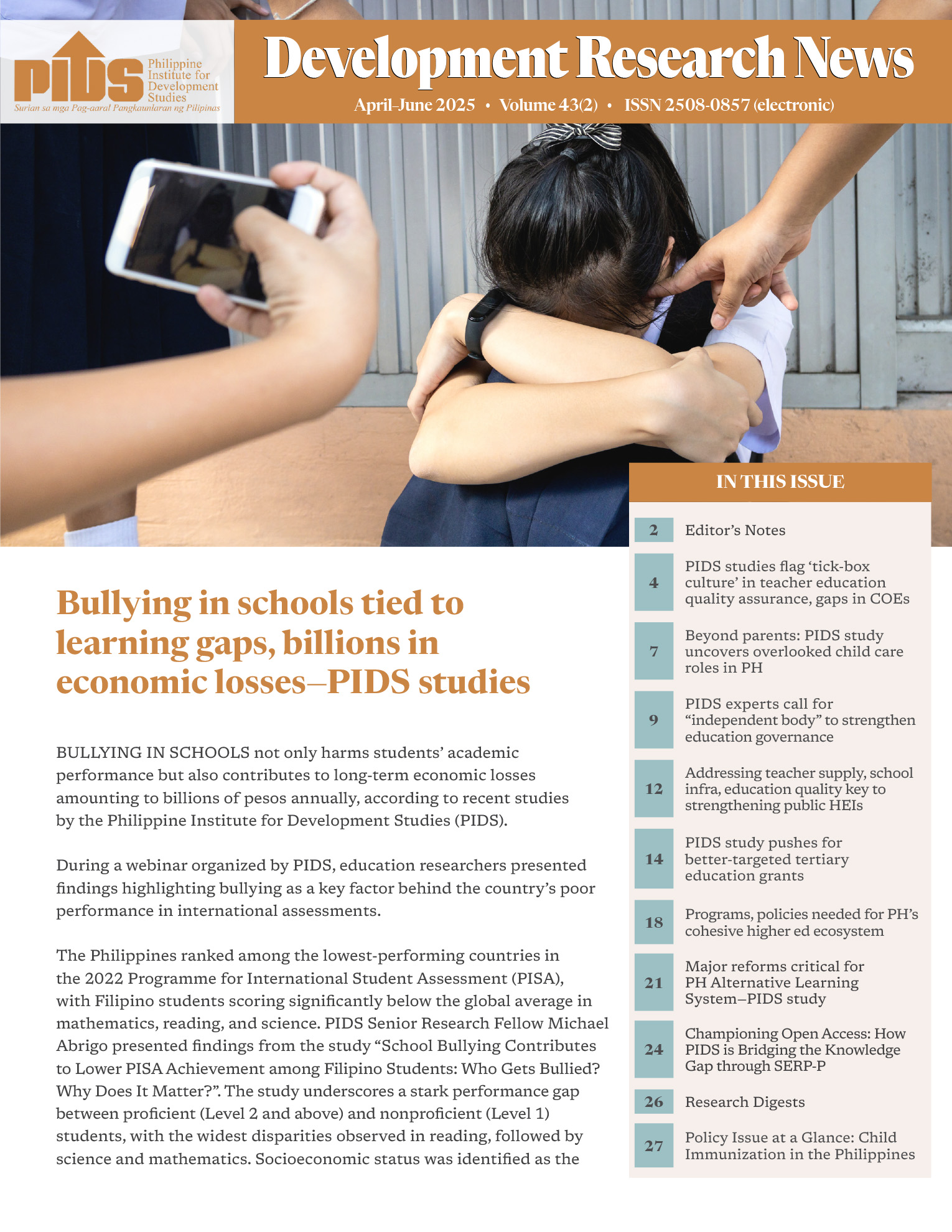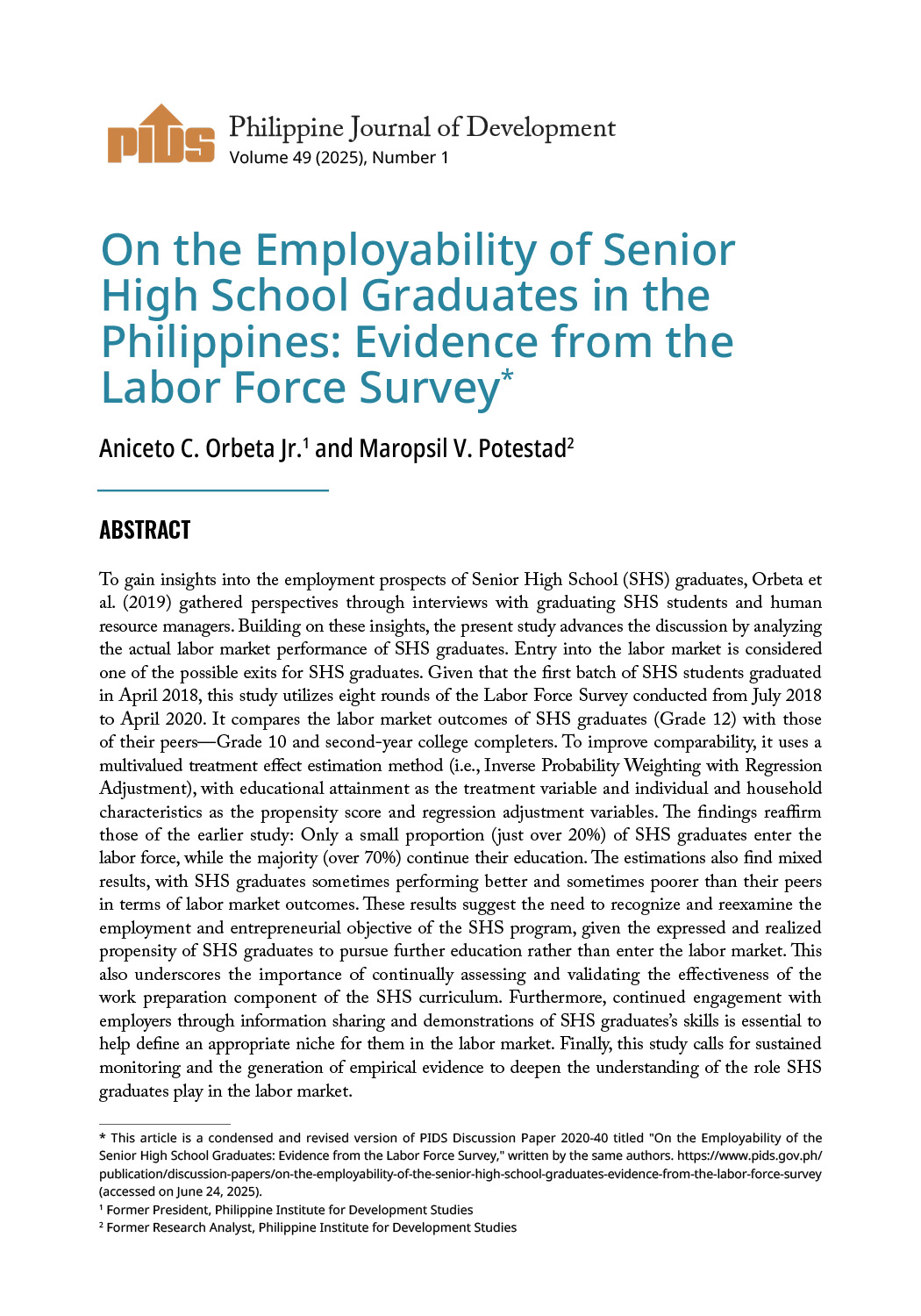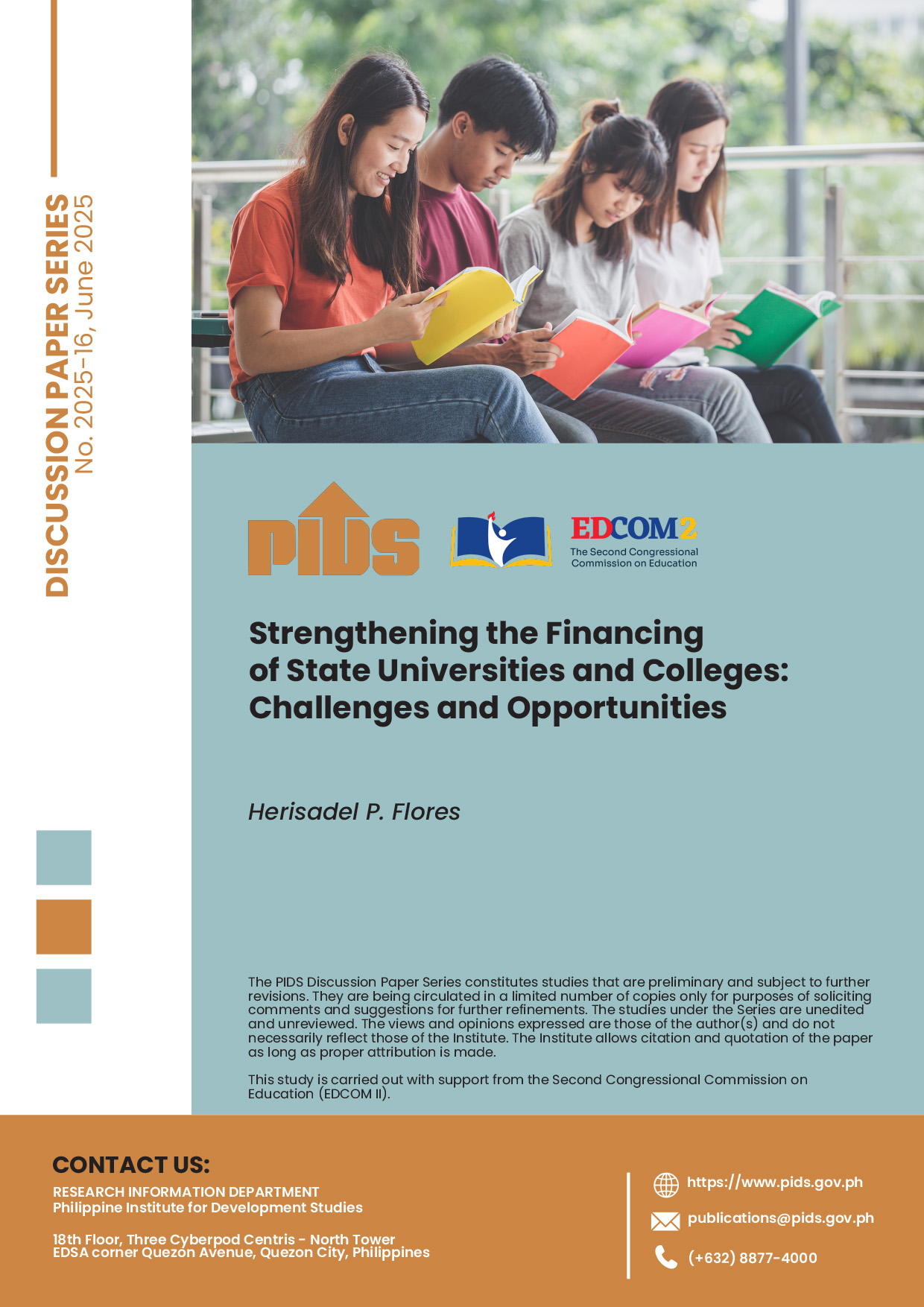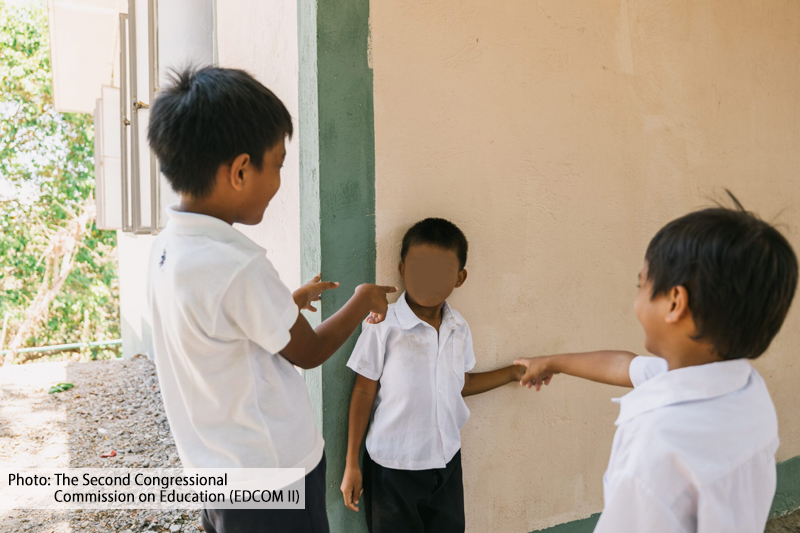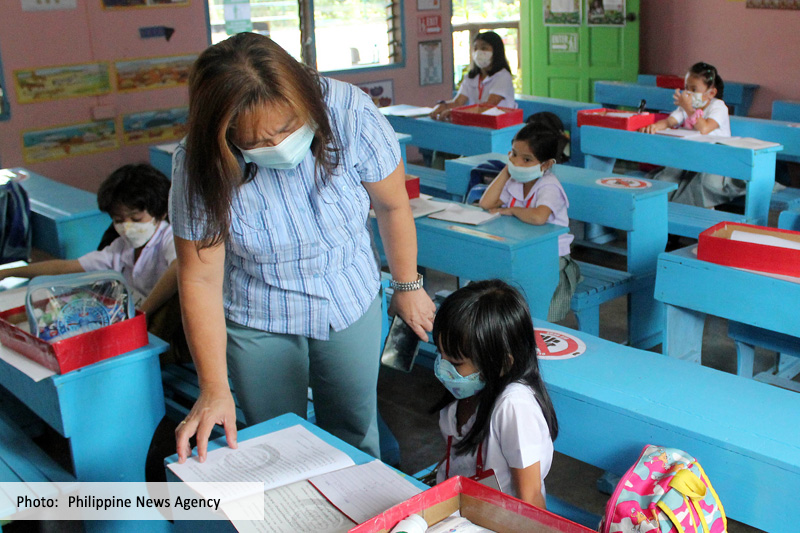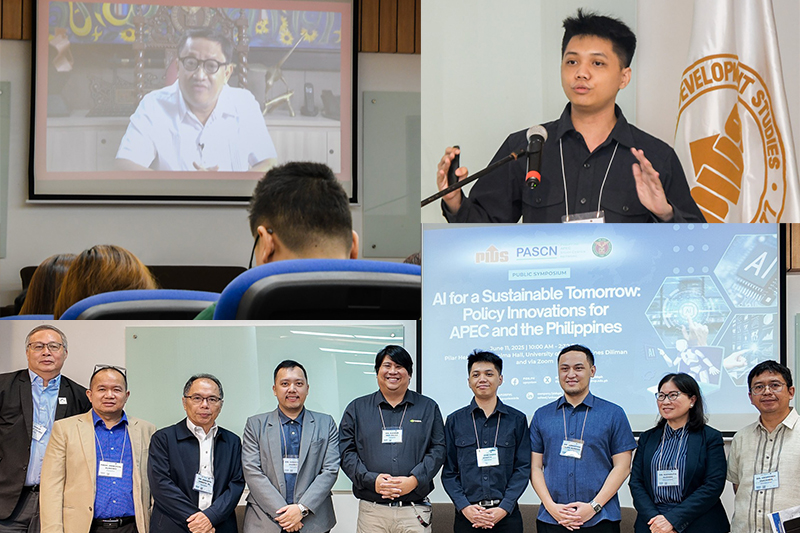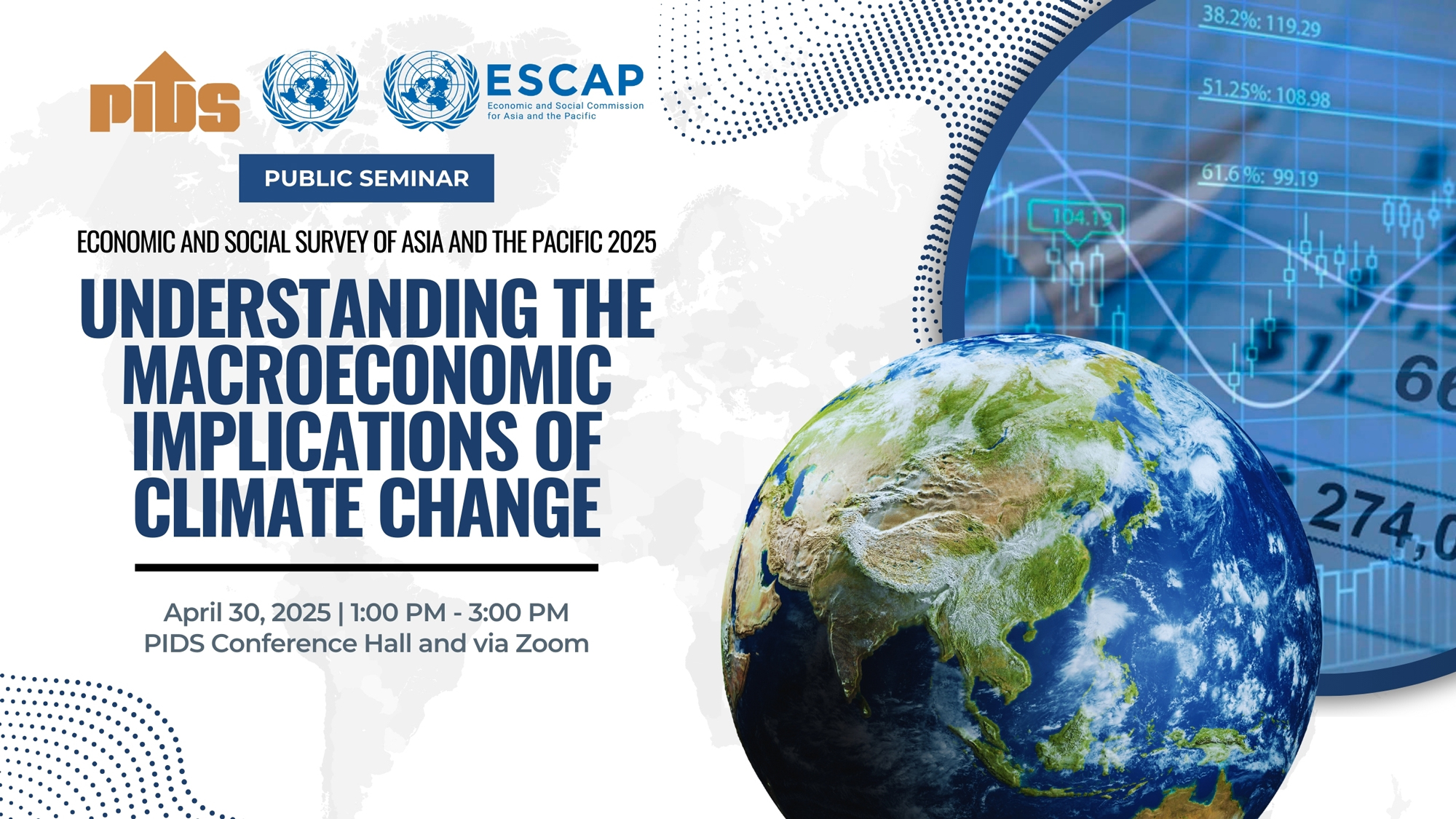INEQUALITY in the country may worsen if quality education remains inaccessible for low-income Filipinos, according to a study released by the Philippine Institute for Development Studies (PIDS).
In a study, PIDS President Aniceto C. Orbeta Jr. and Senior Research Fellow Vicente B. Paqueo said socioeconomic status of families affect the quality of education received by children. This prevents education in the country from being a “great equalizer” in society.
Quality basic education, for one, can only be accessed by children belonging to middle-or high-income households. This makes them the only children able to avail themselves of quality education opportunities such as free education offered by State Universities and Colleges (SUCs).
“The students in public HEIs (Higher Education Institutions) are not predominantly poor but come from the middle class and include children in upper-income classes. In addition, it may even worsen the inequity as better academically prepared children of richer households will outcompete less academically prepared children of poor households for limited slots in SUCs and LUCs (local universities and colleges),” Orbeta and Paqueo said.
The PIDS researchers lamented that the free tuition currently in effect in SUCs will not solve the “inequitable access” to education that is being experienced by many low-income students.
In order to address this, Orbeta and Paqueo cited the need to increase access for the poor at the start from basic education to high school. This will improve their chances of entering college and earning a degree.
“The equity of access issue cannot be readily solved at the tertiary level since most of the poor do not reach college. This is the basic reason college education will always be skewed in favor of the richer households even if we assume the same propensity to enroll in higher education across income classes,” the authors said.
Affordable quality education is only one of many challenges faced by the sector, the PIDS researchers said. The challenges also include the pandemic which has forced millions of students to study remotely.
Learning retention through remote learning in the Philippines is significantly lower than in western countries like the United States.
The National Economic and Development Authority (Neda) earlier said only 37 percent of the learning is absorbed via online classes. In the United States, 52 percent is retained by students through virtual classes.
ADB estimated that the loss in lifetime earnings of Filipino children could be as high as $36.138 billion under the “pessimistic” scenario. The loss in lifetime earnings could reach $26.904 billion under the optimistic scenario and $30.696 billion in the intermediate scenario.
“The pandemic, which forced the country to remote learning mode largely unprepared like many countries, introduced another set of challenges in addition to its pre-pandemic problems,” Orbeta and Paqueo said.
“The country needs to learn from these experiences, rely more on data, and build rigorously validated evidence on what works for our educational system using our experience as educational outcomes are highly context-sensitive,” they added.
Earlier, Neda said the Philippine economy will take a decade to go back to its pre-pandemic growth path due to the lingering effects of the pandemic and the lockdowns.
Neda said the pandemic and the lockdowns imposed by the government are expected to cost the Philippine economy a total of P41.4 trillion in the next 40 years.
Neda estimated that in 2020, the economy lost P4.3 trillion and is expected to continue to lose another P37 trillion in the next 10 to 40 years.
In terms of human capital investment and returns, the losses are P11.025 trillion in education investments and P4.503 trillion in health for Covid-19 and non-Covid-19 diseases.

